What if I told you balance and flexibility could increase your speed, power, strength, and endurance? How would that affect your fight game?
This is going to be the first part of a series of articles where I identify the most underrated skills in boxing, fighting, and maybe even just all sports in general. Read this, internalize it and you WILL open a whole new level of athletic performance for yourself. I guarantee it. Later on, I will write an even more elaborate guides explaining deeper into the two but for now, it’s time for Balance & Flexibility 101.
Balance
Oisin [pronounced “ocean”], a British friend of mine once told me about the time he asked a club-level soccer player, “If you could have only one athletic attribute, what would it be?”
His friend, the soccer player told him, “Balance.”
The soccer player even went on to say that balance was worth more than any other physical such as power or speed or endurance.
When I first heard this, I was a bit irked and maybe even offended. Deep down it stung a little because I knew that I had below average balance. Ever since I was little, I always saw in myself that I had less balance than other kids. In all the sports that I ever played, balance was always something that I had to overcome whereas other kids didn’t have to worry about it as much. When it came to the subject of boxing, I was naturally apprehensive about it and almost wanted to reject the claim that balance could be so important. I wanted to believe that my natural advantages in strength, speed, and power would be more important than a single attribute like balance.
Years passed before I took a more serious look at balance. My existing attributes (speed/power) had already been improved to a point where they could not be any better. I began to wonder and ask myself honestly for the first time if there had ever been anything that I neglected to do. The immediate answer was “balance”. I figured that I should at least give it an honest effort and see if I could not somehow make an improvement in my boxing ability and at least see if that British soccer player was right after all.
3 months later, I realized: That bastard was right.
My boxing abilities improved greatly even when I made only half-assed efforts to improve my balance. Somehow, someway my punches were getting stronger, my endurance was lasting longer, and everything else in my boxing game was improving. The only thing I remembered doing differently was a few balance exercises. It was right then and there that I realized what balance truly was.
What Does It Mean To Move with Balance?
To move with balance means to be one with your center-of-gravity and to move with your center-of-gravity. Anytime you move a part of your body, your CoG either moves WITH that part to keep the whole body in balance OR you have to counter-balance that movement by moving another part of your body. A fighter that is disconnected from his center-of-gravity (CoG) will quickly find himself off balance because different parts of his body may be moving in ways that offset the body’s CoG or move independently of the body’s CoG.
What Does Balance Do For You?
Having balance means you are always in control (or aware) of your center of gravity. Your arms or feet may be placed in outstretched or seemingly unbalanced positions but your body weight as a whole is always on top of your CoG.
Because you are now moving WITH your CoG, your body weight will transfer much more efficiently. Instead of pulling or pushing your weight around the ring, your are now moving WITH your body weight. This means when you take steps around the ring, your body will move faster and exert less energy because your body is fully connected to your CoG. When you throw punches in balance, you will not feel a constant push and pull as you throw and then retract your arms. Your arms don’t feel as heavy anymore because you’re not throwing your weight off balance, you’re moving with your bodyweight and with your CoG. Because you’re not pushing and pulling your arms, your punches will come out faster, hit with more power, and take less energy! At the same time, you are less vulnerable to your opponent’s punches because they will have less effect AND you will also be able to move out of the way faster.
How Do You Move With Balance?
The trick to moving with balance is to always stay connected to your CoG. When you stretch out your arm for a punch, make sure you don’t throw your upper body too far forward that it disconnects from your CoG. The moment this happens, your upper body becomes a piece of disconnected weight and will exhaust energy from you to return it back to a “balanced” position. Instead when you punch, you should shift your entire body weight and moving the CoG so that your whole body moves into the punch. (Do keep in mind that your arm can reach out 2 feet, but your body only has to move a few inches to transfer power into that arm.) By moving the body with that arm, your CoG has successfully shifted over and will stay under you as you punch. When it’s time to return the punch, your whole body will return with less effort since your body is in balance and not having to pull any weight. The overall punch motion will be faster, more powerful, and with less effort.
When you move around the ring, try not to push and pull your weight around the ring. Keep your CoG under your body weight at all times as you move around the ring. If you must jump, jump in balance–that is, to jump with weight still evenly distributed between your two feet. Don’t move in a way that forces your weight to keep transferring from the left foot to right foot. Doing this means you’re pushing and pulling your weight. Do it if you must but it’s generally better to just keep yourself in balance at all times and try to slide your CoG as you move (or jump) around the ring.
Any movement you make in the ring or in any sport should generally be executed within the limits of your balance. Balanced movements are stronger, more powerful, faster, and take less energy!
Flexibility
Flexibility is another physical trait that took me a long time to fully appreciate. Ask anyone to describe the word “flexibility” and they’ll immediately think of ballet dancers, yoga, or high school girls doing the splits. I actually thought of the same things…and I still do. The only difference is that I now know how important flexibility is.
The first time I ever heard of increasing flexibility for fighting purposes was from my friend, Paul who was a BJJ student of Sean Loeffler, an establishing MMA fighter [look him up, he’s on Youtube]. Paul explained to me that Sean swore on the power of yoga and attended yoga class regularly to improve his fighting abilities. I dug further into the subject of yoga and found that it greatly improved one’s balance and flexibility. Further research led me to other activities that also relied highly on balance and flexibility–such as ballet and gymnastics.
Gymnastics really caught my attention because these athletes are among the most precise athletes to be found anywhere in the world. Their bodies are 100% perfect and they’re always performing superhuman-like physical maneuvers. You have to admit that gymnasts are pretty incredible athletes. Aside from attaining the highest levels of balance, flexibility, and precision you could imagine in any sport, they athletes also happened to be among the strongest and most powerful athletes you could find in any sport.
But what about ballet? I see little girls in pink tutus when I think of the word “ballet”. Turns out, there are a wide number of athletes I respect that did ballet. Muhammad Ali and Jean-Claude Van Damme were the first names that came to mind. Both of them took ballet classes and spoke very highly of ballet. Van Damme said “Ballet is an art, but it’s also one of the most difficult sports.” He explained, “If you can survive a ballet workout, you can survive a workout in any other sport.” I was impressed, and pretty darn intrigued.
My brother actually took ballet to improve his tango abilities. Just from the few exercises he showed me, I quickly saw how ballet worked out the body’s physique harder and more completely than any boxing exercise routines I could think of–no exaggeration. I saw for myself that ballet also required extreme amounts of balance, precision, flexibility, and grueling hours of torturous practice. Another friend of mine brought my attention to football players that took ballet and turned out to be amazing performers on the field. They owed their grace, agility, and takedown invincibilities to their ballet practice. The only name I can think of right now during the recent years is Lynn Swann, who was noted in his Pro Football Hall of Fame citatoin for “fluid movements” and “tremendous leaping ability”.
I already knew by now how important balance was…but what is it about flexibility that makes it so important?
Flexibility = Range Of Motion
I never bothered to stretch much for boxing. I did enough to keep my muscles warm and loose, but I never stretched for the sake of becoming more flexible. From what I could see, my arms were “flexible enough” to reach my opponent’s face and my legs were “flexible enough” to move forward and backwards. It wasn’t like I was some kind of martial artist and needed to do the splits for the sake of kicking higher. I cared very little for serious stretching, always thinking to myself:
How much flexibility does a boxer really need?
I soon realized that your flexibility is your range of motion.
I kept thinking to myself that I rarely ever extend myself to my full range of motion. How often does a boxer spread his legs so far apart that they can’t go any further? Usually when I box, my limbs stay well within my range of motion. This inner range, it turns out, could be described as my “EFFICIENT range of motion”.
Which then means that…[great discovery ahead]
Increasing your flexibility
increases your EFFICIENT range of motion.
Efficient Range of Motion
Wow! Now we’re getting somewhere. Now let’s try a little drill to see if I can further demonstrate the concept of “efficient range of motion”. Stand straight up with your feet together and with one leg kick it straight up towards the sky as high as you can and hold it as high as you can for 30 seconds. About 99.99% of the people who try this will definitely not be able to hold their leg at the highest point of the kick. Most likely, your leg will have dropped to half the height or one quarter of the height of where you kicked. And your leg will have to be lowered a bit before you’re able to hold it comfortably still.
This lowered height is your leg’s true efficient range of motion. This is the range of movement where your leg can move efficiently and powerfully without waste of energy. I’m not saying that you can’t kick very high, or that you can’t kick very hard. I’m saying that you can’t do it efficiently and as powerfully as a more flexible person. (Range of motion is the highest you can kick. Efficient range of motion is the highest you can kick efficiently.)
A person with a more flexible leg will be able to kick much higher, with more power, exerting more force onto his opponent, while using less energy. He can do that because his leg is more relaxed as he kicks. Because his muscle is more flexible, it will not strain during the movement. If you take a person with a tight hamstring and tell him to kick up, his hamstring (the muscle opposite to the kicking muscle) will exert a negative force on the leg. Stiff muscles act as a counter-muscle when you move and they are CONSTANTLY working against you. If you’re not flexible, your counter-muscles will always work against you which means you have to spend more energy during movements AND your movement will carry less power because the opposing muscle is working against it. Naturally, your body will tire faster since your muscles are always working against each other. It’s no wonder that coaches in every sport will always remind you that a relaxed muscle is able to move faster and has the greatest potential to move with maximum force.
If you really think about it, a smaller boxer with flexible muscles can be just as strong as a bigger boxer with stiff muscles. The bigger boxer may have a lot of muscle and punch with a lot of force but the reality is that a lot of energy is wasted and the true force output is decreased because his stiff muscles on the other side of the arm are pulling back because they can’t stretch as far. The big strong guy might feel like he made a strong punch and while it’s still a very respectable hard punch, it’s nowhere near as efficient and as powerful as it could be.
That’s how much of a difference flexibility really makes. Now look back at all the times you sparred in the ring. See if you can remember all the times you over-extended yourself and had to reach a little extra to land a punch or lean out of the way. All those times you stretched outside of your efficient range of motion, you were wasting more energy and moving less efficiently. Anyways, give it a try, start stretching seriously and start increasing your EFFICIENT range of motion so that you may be able to punch harder, faster, over a wider range of motion while using less energy.
My first yoga class turned out to be a humbling experience. I could barely hold the positions. I felt like my body was going to tear apart at any moment while everyone else in the room seemed to be completely relaxed. It really made me wonder if that was symbolic of my efforts made in the ring. Was I the one wasting all this energy while the other guy was relaxing? I didn’t want to hear the answer, it was time to take matters into my own hands. I now understand why they say yoga improves strength, and power, and balance.
Stretching doesn’t add muscle,
it allows you to make more efficient use of your muscle.
And what a wonderful discovery that was. I spent years of my life developing hard earned muscle, why not invest in making sure the muscle was used as efficiently as possible and to utilize its fullest potential possible? Better late than never, I too ultimately learned that Balance & Flexibility made a big difference in my strength, speed, power, and endurance! If you’re looking for new ways to push your athletic abilities to the next level, try improving your balance and flexibility.
Be on the lookout for the next part to my Underrated Boxing Skills series. (Yes, I know. “Flexibility” isn’t really a “skill”.)
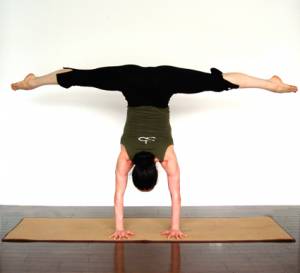





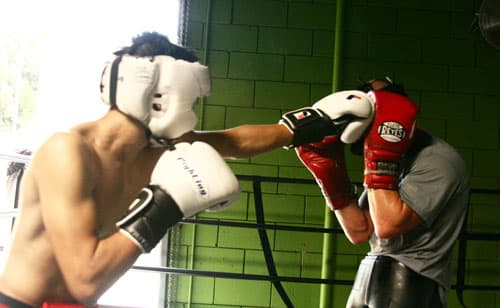
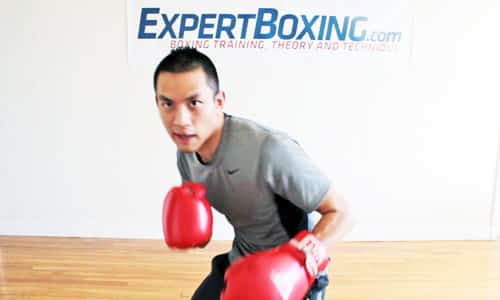


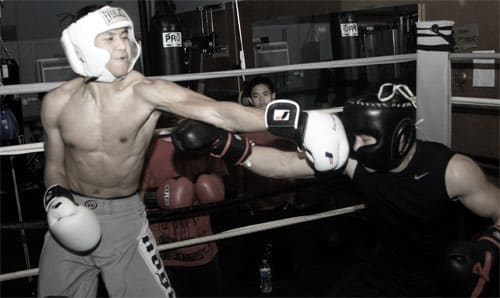
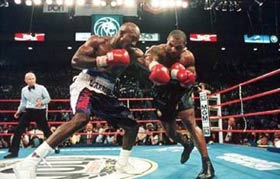
Useful
I found your article very interesting.I have taken yoga, and am familiar with the feeling of balance one gets from yoga, however now that I have taken up boxing,I still feel a certain stiffness in my waist when punching.I have not however streched before class.Do you have useful excercises for that,on how to maximize a fast punch, and loosen the waist. Can you elaborate more on how to hava a better CoG? what does that stand for Center of Gravity?Many thanks.
loosening the waist
More stretching. As for a better CoG (center of gravity) that’s going to come in another article. These are getting so long and detailed that it takes me a while. I do have some other balance articles published to help, though.
As for maximizing a fast punch, have you read my improving punch speed article?
Hi,
Can you tell me your source for the benefits of balance to improve movement and power? I haven’t been able to find any research in this area although a lot is written about it.
Many thanks
you’d never had thought!
I came across your website about 1 month ago and think it is the best boxing tips/technique website for a teenager who is into boxing, I find your way of writing very interesting.
This may sound stupid, but apart from taking yoga classes and ballet lessons, what stretches are the most effective and relevant to boxing motions.
Also, how far do you agree with what we always hear that “speed is natural, it can’t be created”, ever since starting going to boxing club I had above average speed but I was not able to adequately use my speed advantage during the first sparring sessions due to the false sense of security and neglecting keeping distance caused by excessive use of the punch bag.
Thankyou
boxing related stretches
The back, neck, stomach, torso, shoulders, legs, and calves.
balance
i need to improve my balance as i also feel that mine is below average. what exercises are good for improving balance?
hi Ryan,
The best balance exercises I’ve experienced are the ones done by tae kwon do practitioners. Kickboxing type of athletes usually have better balance because they’re forced to fight on one leg at a time. I’m going to release an article real soon…please hang on!!!
yoga exercise for boxing
hi johnny,
i found your articles are really helpful and real. i am a boxing fan.i am new for boxing training, i have trained for over 7 months.
can u mention yoga exercises which are helpful for boxing?
thank you
Hi daniel, just do all forms of yoga. All of it in some way, shape or form, improves your overall physical conditioning and physical performance. I liked very bit of it.
yoga for boxng
thx johnny, i’ll try
mate your a legend
i am gonna give ballet and yoga a crack and see whether it gives me that elusive edge i am looking for
qigong and yoga
get the free video from falundafa.org and go to youtube and search on “five animals qigong” and select the one with 3 chinese people. qigong is the standing exercises for Chinese boxing.
I like to do qigong and/or tai chi before doing yoga, as it is a great warmup. I also do Mari Winsor’s reformer strap pilates.
@ Rob – I saw the qigong videos and they are definitely very different from what I’m use to seeing. I was wondering if you could point out to me what to look out for? They do seem great as a warm-up.
Yoga and pilates
I found yoga and pilates have improved my boxing. The yoga helped my balance and flexibility and the pilates works the core muscles in ways that sit ups ect don’t. This seems to have given me more power from the core and oblique muscles.
On the other hand I have read a few articles recently that suggest that static stretching (as in yoga) just before a sport requiring explosive power, can reduce the power of muscular contractions.
@David B – Your comment about the static stretching reducing the power of muscular contraptions got me thinking a bit.
Reducing power from stretch
Hi for the the post that stretching reduces power, this is my answer as that subject is also a part of bio mechanics we studied and I also often teach this to clients when i worked at Golds gym long time ago. You see when you stretch the main moving muscle before you execute a move (the triceps brachialis for punching) you will hav a reduced power for the punch and can lead to injury but if you stretch the oppossing muscle beforehand (the biceps brachialis in punching ) that will lead to an increase in punching power. So lesson for the day: try to increase flexilibility in triceps long before you perform the move or train preferablybat another time of the day or right after you finish trainig. Pls reach me at +639291519339 for questions thank you and it has been a very good article
Nurse, that’s a great tip. I never knew that. Thank you!
Welcome!
Yo johny your welcome! And thanks to your website a ton! Now boxers can increase their boxing literacy by the way johny good news! I found a boxing gym th
At that isnot so expensive and they have free sparring sessions. i always loved boxing but when i was stil young my parents wont sponsor any boxing for me so they made me go to taekwondo instead which was good anyways , and lucky the gym was hardcore and not the overprotective taek gym type,q i channeled my aggressivenes there, now im earning money for myself im free to box and do the sport i like, in the meantym il be doing roadworks to get back my endurance, and increase my literacy with the help of your website. Im scheduld to start training at july, Godspeed to expert boxing!
Any sport ive ever played
I found the article very useful. I remember playing many sports and it was rare that I ever stretched – what sporting coaches normally say to you is ‘stretch/warmup so you dont get injured’ – I have never been injured playing sport – and i have played basketball, australian rules, soccer. I think if coaches explain the advantages of stretching and balance to their players they would be more likely to take advantage of yoga etc. What really appealled to me is the kicking range of motion/and the bigger and smaller boxer examples. Im a biggish guy however cannot kick over a long distance, but you see these smaller players who kick over 50metres. I wish I known earlier in my playing days. Great article.
..
“3 months later, I realised that bastard was right.” LOOOOOOOOL :P:P:P:P
I found that shadowboxing with my eyes closed helps me figure out were my balance is better, have you heard of any similar techniques
Actually, I do know some other great balance drills to help you be more aware of your center of gravity at all times. I’ll have to post it in a future article!
Thanks Johnny N & Nurse g.romasanta !
hey johnny i know lots of great balance drills let me know if you need help posting any exercises.
Tim can you post the drills please?
1)http://www.beginnertriathlete.com/cms/article-detail.asp?articleid=1272
They have one of these at the y and i love it. You can use it for just about any exercise squats,presses, curls, ect, ect.
2)http://www.beginnertriathlete.com/cms/article-detail.asp?articleid=1272
This is a great one but dont try and go all the way down your first time. Just focus on reaching your extending toe as far as you can while keeping it close to the ground. As you progress u can go lower and lower. keep balance as long as possible
3)Box drill. Take masking tape make a 3x3ft box and practice stepping to each corner while keeping your stance and balance.
4) Simply move around the ring and focus on keeping a good center of gravity. You dont even have to throw punches.
5) https://www.youtube.com/watch?v=8H_WuMrtABk
This is the most difficult the guys may not look real dough but this pose requires perfect balance as well as core strength. Move into position slowlyand practice in fron of a mirror. While doing focus on the whites of your eyes, that usually helps me.
enjoy, let me know how it goes for you.
srry bout the spelling
I always used to assume yoga was for skinny East Indian Gurus and overage hippies. My flexibility is quite poor especially in my lower body, and especially my hamstrings. Will try yoga soon. I’ve heard of many athletes trying ballet but I never knew Muhammad Ali was one of them. I guess most males can’t get past the stereotypes that surround males who practice ballet but they are wonderful athletes with extremely powerful legs. I’ve seen clips of GSP including gymnastics in his training routine and I will agree that they are among the world’s best pure athletes perhaps along with the decathlon participates in the Olympics. Unfortunately both decatheletes and gymnasts only receive major attention every four years when the Olympics are scheduled and the rest of the time these great athletes toil in relative obscurity. Now Mike Tyson performing ballet would be hilarious.
You should read “The Arc of Boxing” – it talks about how the perfect body for a boxer should resemble a dancer. But oh man…Mike Tyson in a tutu, lol.
Thanks for this article! I’m fairly new to boxing. I’ve been at it maybe 6 months. I had actually been taking ballet for a few years prior to picking up boxing. Everyone kept telling me that it would give me a great head-start or even an advantage. I, of course, liked hearing this. But I didn’t fully understand why it would and assumed folks were overstating the facts for my benefit since they weren’t able to really explain it very well themselves.
I’m very glad to have a good explanation on the matter and see what exactly it is that I’m supposed to be getting out of it. It’ll certainly cause me to work on ballet even harder while I develop my boxing skills.
Ballet is definitely a huge bonus. I’m taking ballet as we speak which puts my balance and footwork on a whole other level. Good for you, David.
your articles help me a lot throughout mate,i waw working hard t try and increase my punching power through pushups but there was not any flexibility in me,i tried your suggestions n yes they do work,finally i won the 3rd position in the superheavyweight boxing category 🙂
Oh wow…congratulations!
Will doing atleast 15 minutes of stretching and becoming more flexible increase my reaction time
hey there
first off great article , i can’t thank you for what you’ve been doing here i am very grateful to you for that .
i’ve been thinking to have a regime where i could do some basic weight training (i am light built )and mix yoga with it hence trying to combine strength mass and flexibility (i believe the corner stone of boxing)
my question is will the body respond positively and at proportion does one divide yoga,boxing and basic weight training ?
again thank you so much for all your amazing work !